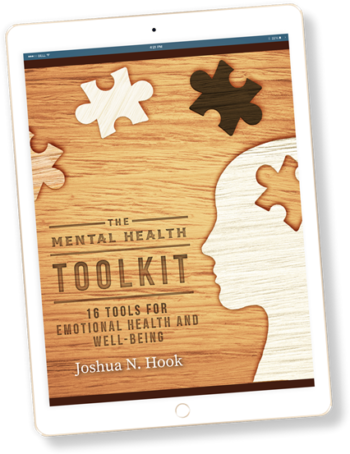A Beginner’s Guide to the Enneagram
January 12, 2020
Categories: Enneagram
The Enneagram is quite popular nowadays. It seems like everyone is talking about their number as a way to help understand themselves and others. But the Enneagram can also be confusing. Personality types, wings, levels of development, movement in stress and security, triads… There can be a lot of jargon that is difficult to understand. To help Enneagram rookies, I want to give a quick (and hopefully simple) introduction to the Enneagram.
What is the Enneagram?
At its core, the Enneagram is a way of describing your personality. In other words, it helps to map out your typical “way of being” in the world—how you generally think, feel, behave, get your needs met, and respond to stress. In addition to describing your personality, the Enneagram can also be used as a tool for personal or spiritual growth.
History of the Enneagram
No one really knows where or how the Enneagram came about. It may have connections with the Sufis, a mystical sect of Islam. There have also been connections made between the Enneagram and the Desert Fathers, a mystical sect of Christianity. So, the Enneagram (in some form) may go back thousands of years. However, in modern times, thinkers such as Gurdjieff, Ichazo, and Naranjo introduced the Enneagram to the West and connected it with modern psychological theory.
The Theory
The Enneagram theory for how your personality develops goes something like this: When you are born, you express yourself in a totally full and honest way. One author described it as having a 360-degree personality. You can see this by observing a baby or very young child. When they are happy, they laugh and jump for joy. When they are sad, they cry. When they are angry, they scream and stomp their feet. They express the true essence of who they are.
However, early on, we begin learn that certain ways of being are “good” and other ways of being are “bad.” We are affirmed when we do certain things, and we are punished when we do other things. We start to develop behaviors and habits in order to cope with stress and pain, and get our most important needs met. We engage in these behaviors and habits over and over again, and in time they form our personality.
Eventually, our personality hardens, and our personality begins to “cause” our behaviors. In other words, we tend to act in certain ways that are consistent with our personality. Our menu of options for how to engage in the world decreases. We lose touch with our core essence, and become more like a caricature than a fully alive human being. We lose our psychological flexibility and behave in a rigid manner.
This rigid way of engaging others and the world can cause problems in our life. The strategies that used to work to get our needs met as children don’t necessarily work anymore as adults. We might develop a personality disorder or other mental health problems. We might have a difficult time in relationships because we can’t engage flexibly with our partner, family, or friends. We struggle to get our needs met.
Here is where the Enneagram can be helpful. By helping us understand our personality, or our typical ways of being in the world, we can gain awareness of our rigid ways of acting and behaving. We can understand our thoughts, feelings, and behaviors in a deeper way. We can “catch ourselves” when we react out of our personality. Based on our personality, we can set goals for personal and spiritual growth.
The System
The Enneagram categorizes individuals into 1 of 9 personality types. Again, these types refer to your typical way of being in the world. Although you might identify with characteristics from multiple types, after engaging with the Enneagram for some time, people usually zero in on one of the types that best describes them. I am going to give brief descriptions of each of the 9 types below, but I would encourage folks to explore the Enneagram in a deeper way through reading books, attending workshops, or working with a coach.
Here are a few thoughts about how to identify your type:
- The negative characteristics are easier to identify. Each type has both positive and negative characteristics, but I have found that understanding the negative characteristics is usually more helpful when trying to identify your type. So, that is what I will focus on in my descriptions below. If any of the descriptions tap into things you really hate about yourself, you might be close to discovering your type.
- Think about yourself at age 20. If you have done a lot of personal work in your life (e.g., long-term therapy), it might be difficult to identify your type, because you might not be as locked into your personality anymore. Your personal growth may have allowed you to engage the world in a more flexible and balanced way. If this is the case, it can be helpful to think about what you were like when you were 20. By around age 20, your personality has mostly consolidated, but you usually haven’t had the time or energy (or felt the need) to engage in long-term personal work. So, it can be a good window into discovering your type.
- Talk it over with family and friends. It can be helpful to talk over the various types with the people who know you best. Ask your family and friends how they perceive you. Sometimes this can provide a new perspective into your personality type.
- Get more help. If you’re still struggling to identify your type, spend some time and take a deeper dive into the Enneagram. There are several books that you could read (see list of references at the end of this post). You can also attend an Enneagram workshop with a trained facilitator, or hire an Enneagram coach to help you discover your type.
Type 1: The Perfectionist
Type 1 is the perfectionist. They are concerned with being moral and good. They often can quickly see and point out the imperfections in themselves and others. They struggle with the search for perfection (which can never be achieved). They often fixate on the inadequacies in themselves, others, and the world. They can be critical and obsessive about order and control.
Type 2: The Helper
Type 2 is the helper. They are focused on meeting the needs of others. They can be so focused on helping others that they don’t acknowledge their own needs or wants. They struggle by focusing so much on helping others that they avoid dealing with their own issues. In order to maintain connection with others, they help and make other people dependent on them. They feel validated by having others need them. This can come across as controlling.
Type 3: The Achiever
Type 3 is the achiever. They are effective and efficient, and are very focused on achieving their goals and succeeding. They struggle with having to keep on achieving—they don’t view themselves as worthy unless they are consistently achieving something great. They can get caught up in a singular focus on tasks and goals, and become workaholics. They connect their self-worth with their achievements, and avoid failure at all costs.
Type 4: The Individualist
Type 4 is the individualist. They have a deep desire to be special and unique. They constantly striving for authenticity and uniqueness—they struggle to accept the ordinariness of life. They can focus so much on what is “missing” that they can’t enjoy what they have. They can also become self-absorbed and over-identify with their feelings.
Type 5: The Investigator
Type 5 is the investigator. They generally are keen observers of the world, but do so in a detached manner. They want to understand what life is all about, and they often retreat by themselves to try and figure it out. They struggle with withdrawing from the world and disconnecting from others, which can be isolating. They can have trouble actually engaging with their life (they would prefer to observe from the outside).
Type 6: The Loyalist
Type 6 is the loyalist. They are often team players and very reliable. They have a deep need for safety and security. They struggle with anxiety—they are always looking out for the worst. They often struggle with authority—many will join up with powerful institutions (such as religion) because it provides them with a sense of security, whereas others may rebel against authority. They have difficulty trusting themselves, and often look to others for help with direction and decision-making.
Type 7: The Enthusiast
Type 7 is the enthusiast. They radiate joy and optimism, and want to live life to the fullest. They struggle with FOMO and never want to miss out on anything. They struggle with accepting and integrating the darker sides of life. They often avoid or brush off painful experiences and emotions because they don’t want to acknowledge or experience them. They can struggle with excess—more is always better.
Type 8: The Challenger
Type 8 is the challenger. They come across as strong and mighty—and often can take charge of whatever situation they find themselves in. They are comfortable with conflict; in fact, they might even seek it out or create it. They can struggle in relationships—because of their power, others can feel run over by them or disrespected. They can’t stand any sense of weakness—they work to repress or deny these parts of themselves. They need to be in control.
Type 9: The Peacemaker
Type 9 is the peacemaker. They are laid back and can accept others without prejudice or judgment. They are able to see the different sides of the issue, which can make them great mediators. They can struggle to come to their own opinion or put themselves out there. Sometimes they have a tough time getting going or moving forward on their most important tasks. They tend to stay back, where it is comfortable.
Personal Growth with the Enneagram
There are two key ways the Enneagram can help you in your life. First, the Enneagram can help you understand yourself and others in a deeper way. Some of us struggle to understand why we do the things we do. It’s like the Apostle Paul said in his letter to the church in Rome: “I do not understand what I do. For what I want to do I do not do, but what I hate I do.” The Enneagram can help answer this question. When we were young, we built up a series of habits and behaviors to meet our needs and cope with stress. Over time, our personality “hardens” and we get locked into certain ways of being, even if they aren’t helpful or beneficial for us.
The Enneagram can also help us understand others in our life. For example, it helps my marriage to understand that I am a 6 and Jenn is a 7. We look at the world differently. I tend to be more cautious and anxious, wanting to make sure we are safe and secure. Jenn is generally optimistic, doesn’t worry as much, and doesn’t want to miss out on anything. When we disagree or see things differently, the Enneagram can help us explain our perspective and understand one another in a deeper way.
The Enneagram can also help us be more flexible and effective in how we live our lives. If I understand my personality in a deep way, I am better able to “catch myself” when I am acting out of my number. The first step is self-awareness. Can I notice when I am acting out of my deeply ingrained habits? Can I catch myself when I am acting “6-ish?” It’s not about judgment or right and wrong. But once I notice myself acting out of my personality, I can make choices. Is this way of engaging in my best interests? Might I be able to try out something different?
I like to think of our true self or essence as a bright light that is inside us. Over time, as we had to navigate this world growing up, our personality formed around our essence in order to protect us from pain. It was necessary for our personality to develop in this way, but over time, it hardened. We tended to act in a certain way even if it wasn’t always in our best interests. With the knowledge of the Enneagram and our personality type, we can gain awareness of our habits, and why we do the things we do. Then, if we choose, we can try something different. When we respond in a different way, our personality “cracks” a bit, revealing our true self or essence underneath. Personal and spiritual growth involves letting go of our hardened personality, and being open to the essence in us that is underneath.
More Resources on the Enneagram
The Road Back to You by Ian Morgan Cron and Suzanne Stabile
The Enneagram: A Christian Perspective by Richard Rohr and Andreas Ebert
The Wisdom of the Enneagram by Don Richard Riso and Russ Hudson

Related Thoughts
17 Comments
Leave A Comment

Subscribe To My Newsletter
Join my mailing list to receive the latest blog posts.
Receive my e-book “The Mental Health Toolkit” for free when you subscribe.






[…] I talk about the Enneagram with others, I often think of that scene from the movie Forrest Gump. The Enneagram describes 9 […]
[…] people struggle to discover their Enneagram number. When this happens, one thing that can be helpful is to look at the core struggles for each type. […]
[…] people struggle to discover their Enneagram number. When this happens, one thing that can be helpful is to look at the core struggles for each type. […]
[…] be doing a new blog series where I will interview someone about their experiences with the Enneagram. The goal is to help paint a picture about what it is like to be each number. My hope is that it […]
[…] of the most frustrating things about the Enneagram (for me) is when people use it to put themselves in a box. “Oh, I’m a 6, I can’t do that.” […]
[…] of the more interesting (and for me, confusing) parts of Enneagram theory involves inter-type movement. In other words, the lines on the Enneagram connecting the different […]
[…] of the more interesting (and for me, confusing) parts of Enneagram theory involves inter-type movement. In other words, the lines on the Enneagram connecting the different […]
[…] How did you get introduced to the Enneagram? […]
[…] of the things I’ve been thinking about lately is how to use the Enneagram as a tool in counseling, coaching, and personal growth. It has been incredibly helpful in my own […]
[…] How did you get introduced to the Enneagram? […]
[…] How did you get introduced to the Enneagram? […]
[…] reality is that we are all different, with different personalities, needs, wants, and preferences. Because of our differences, we might not be in tune with what our […]
[…] How did you get introduced to the Enneagram? […]
[…] How did you get introduced to the Enneagram? […]
[…] the song that spoke to me, and I realized it touched on the core struggle and motivation of my Enneagram […]
[…] How did you get introduced to the Enneagram? […]
[…] people talk about the process of personal or spiritual growth using the Enneagram, they often talk about “catching yourself” acting out of your number so you can engage the […]